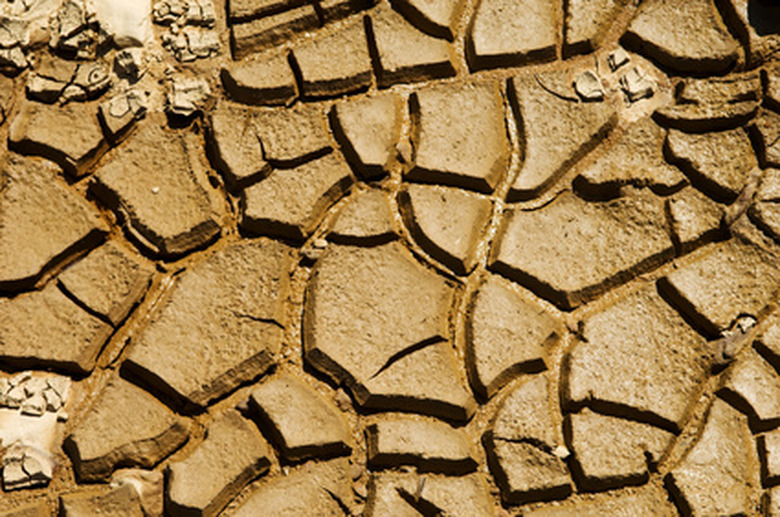Clay Soil Facts
Clay is one of the most difficult soils for gardeners. It's sticky when wet, dense and hard to wet when dry, and it cracks and erodes rather than absorbing water. Most plants dislike growing in clay. On the positive side, clay holds water and nutrients well and, when improved by adding organic matter, can be moist and fertile.
Composition
Clay soils are made up of tiny particles of clay minerals mixed with various proportions of silt, somewhat larger particles and organic matter. A soil high in clay will feel sticky to the fingers when wet and can often be molded into a solid lump that resists fragmentation. Clay is formed from the weathering of feldspar and other minerals that fragment into tiny flat plates that pile on top of each other, leaving little space for water or air.
- Clay is one of the most difficult soils for gardeners.
- A soil high in clay will feel sticky to the fingers when wet and can often be molded into a solid lump that resists fragmentation.
Characteristics
The particles of clay soil are so small that the pores between them, though numerous, hold water tightly by capillary action, making it less available to plants. Nutrients also bond to these particles. Water often runs off the surface, eroding the soil, rather than sinking in because of the small size of the pores. Air, as necessary as water for root growth, also has difficulty moving through the soil.
Soil Structure
Most clay soils also have a structure that is dense rather than granular and crumbly. In loam soils–a combination of clay, silt and sand–the structure is often loose and filled with air spaces due to the aggregation of particles into larger groupings glued together by humus or other material. Clay soil minerals pack tightly rather than forming aggregates.
- The particles of clay soil are so small that the pores between them, though numerous, hold water tightly by capillary action, making it less available to plants.
- In loam soils–a combination of clay, silt and sand–the structure is often loose and filled with air spaces due to the aggregation of particles into larger groupings glued together by humus or other material.
Improving Clay Soils
The best amendment for clay soil is organic matter. Not only does the fibrous material open the pore spaces, allowing for better penetration of water and air, but the sticky humus that is the end product of decomposition will glue the clay minerals into larger particles, similar to sand, that further open the soil. As the organic material decays, add more to renew the supply. A 2- to 3-inch layer of peat, coir, compost, straw or other organic matter should be dug in each year for best results.
Working With Clay Soils
The most important thing when digging or working around clay soil is to preserve the air spaces as much as possible. Never work with it when wet, or it will form a sticky, solid mass. You can often break clods into smaller pieces when somewhat dry and then preserve the air spaces by walking on it as little as possible, especially when wet.
- The best amendment for clay soil is organic matter.
- The most important thing when digging or working around clay soil is to preserve the air spaces as much as possible.
